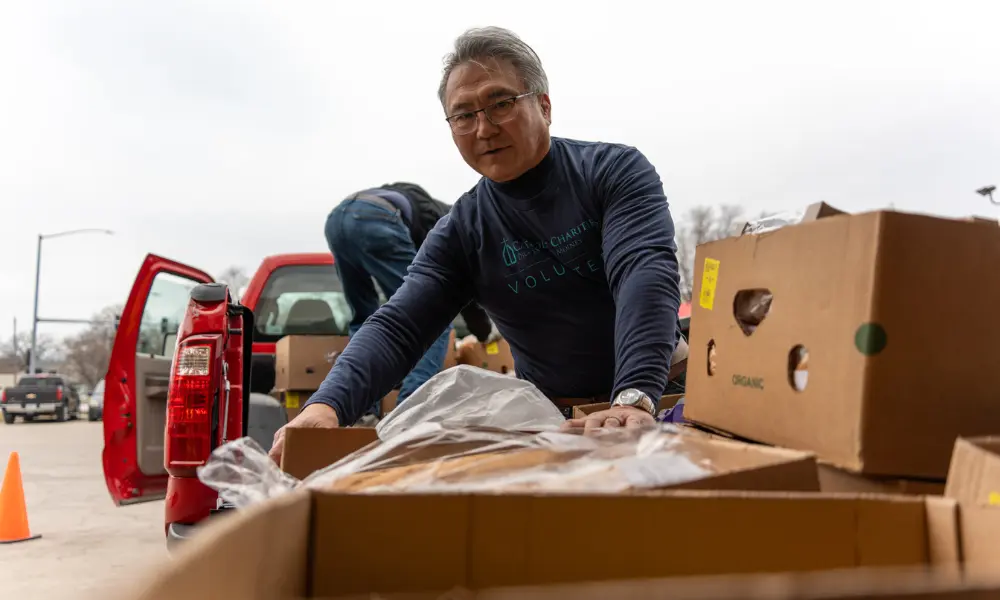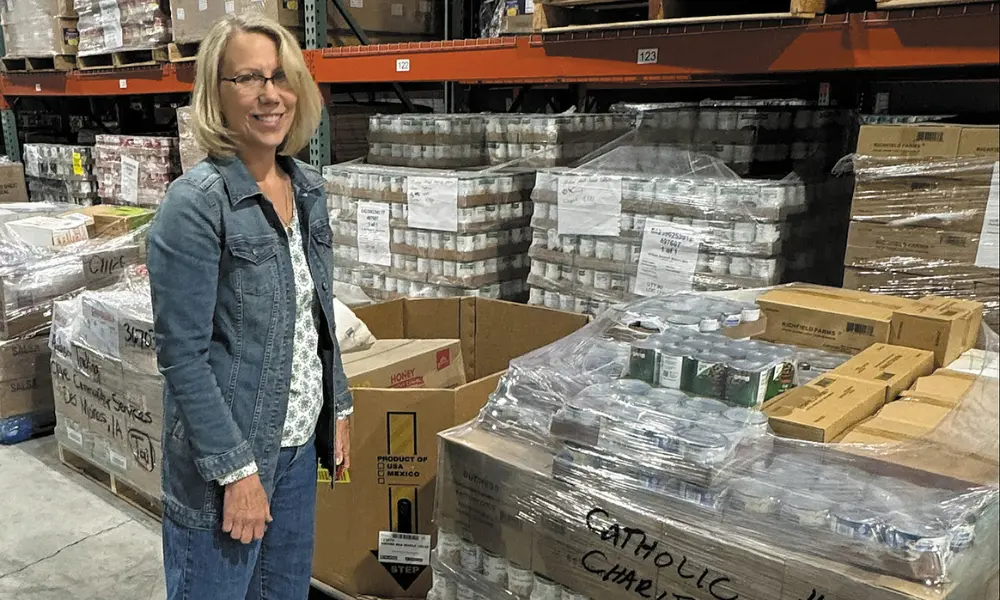Pantries tackle crisis of food insecurity
November 13, 2024

In less than two weeks, families and friends across the nation will gather to give thanks and share a meal.
Local food pantries are doing all they can to ensure there is enough food for all on that day – and every day.
“This is really a crisis. We’ve never seen so many first-time visitors in our over 48-year Food Pantry Network history,” said Leslie Garman, director of Development and Outreach at the Des Moines Area Religious Council (DMARC), which provides food to 14 pantries in the Des Moines metro area.
“People are struggling to have their basic food needs met, and today, neither food drives nor garden donations alone will meet the need we are seeing,” she said.
Annette Hacker, vice president of Strategy and Communication at the Food Bank of Iowa, agreed.
“We don’t know where the ceiling is in terms of need. We don’t think we’ve seen it yet,” she said. The Food Bank of Iowa partners with pantries in 16 counties in the Diocese of Des Moines. Of its 700 food pantry partners, 332 are within the Diocese.
Both the Food Bank and DMARC are supported by donors. DMARC recently built a new warehouse, and the Food Bank of Iowa built a 30,000-square-foot addition to its Des Moines distribution center, doubling its food storage capacity. Those warehouses are busy.
“This is not a food museum,” Hacker said. “The food comes in, the food goes out every single day, every single week.”
Both the Food Bank and DMARC say they need more help to meet growing food insecurity in Iowa.
“We’ll treat this like an emergency because that’s what it is, but at the end of the day we know together we can unite to meet this need,” said Blake Willadsen, marketing and communications manager at DMARC.

Leslie Garman, development director for Des Moines Area Religious Council, shows a pallet of food heading to Catholic Charities’ Food Pantry. DMARC contributes food that goes toward a monthly, 3-day box of food for those who need it. Last year, Catholic Charities gave away 1 million pounds of food to people at no expense to their guests.
The problem
How can there be a growing number of people suffering food insecurity when the market is up and unemployment is low?
Several factors are creating the proverbial perfect storm.
One, wages have not kept up with inflation. Yes, wages have risen, but not at a pace to keep up with costs, said Garman. Hacker backed her up, saying grocery prices rose 25% just in the last four years.
In Food Bank for the Heartland’s service area last year, one in 11 people were food insecure, said Stephanie Sullivan. The Food Bank for the Heartland covers 77 counties in Nebraska and 16 counties in western Iowa including eight counties in the Diocese of Des Moines. Today, that number is one in eight people.
“People are still struggling to afford everyday essentials like rent, medication, food, childcare,” Sullivan said. “This comes after the lingering effects of the pandemic and the floods of 2019, which Iowa and Nebraska experienced. It’s been year after year of crisis and it has created a big gap.”
Also contributing was the ending of government support programs offered during the pandemic.
“With less government support for people living in poverty, that puts it on the backs of the charitable food system,” Hacker said.